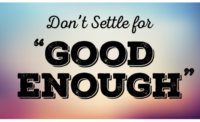Six Things to Know When Designing Food & Beverage Packaging for Kids
Creating packaging that kids want and adults want to buy










I’m noticing that more and more clean, convenient kids’ meals and snack foods are flooding the market. Personally, I think this is great. As a busy mom, I know that many parents appreciate having these kinds of foods readily available and kids do too, of course. I write a lot about packaging strategies for adult consumers, but what about the kids?
Packaging for food products aimed at children needs to be fun and exciting. But it’s a little tricky because you need to walk the fine line of appealing to both kids and parents or caregivers. If either of the parties is not interested, the product is not likely to be purchased. So how do you do it? Here are six pointers to follow:
1. MAKE IT VISUALLY INTERESTING FROM A KID'S POV
The visuals of the design should speak to the kids since this is what will be most eye-catching to them. However, the design should be in sync with the tone of the product. If it’s a natural, wholesome product, then neon colors and zany graphics may not be the way to go since those typically represent more commercial foods that don’t have clean ingredients. Whatever the design, make it fresh and exciting.
2. SPEAK TO PARENTS/CAREGIVERS
With the visuals appealing to the kids, the messaging should speak to the adults. Think about it: The child is likely to bring the package to the adult asking to buy it. The adult will likely then inspect the package and skim the copy to see what it is and what’s in it. The parent or caregiver is usually the final say in whether the product gets purchased or not.
3. DESIGN APPROPRIATELY FOR THE AGE RANGE
Maturity and tastes change quickly from toddler to kid to tween to teen. If the design is off for the audience then the mark will be missed big time. If you’re targeting multiple age ranges then it’s likely to be more of a family product than a kid product, with more emphasis on the parent portion of the audience. Nevertheless, make sure the design still appeals to the individual age ranges.
4. KNOW WHEN TO USE ILLUSTRATED CHARACTERS
Characters, especially for the younger ages, are apt to generate excitement and interest on the child’s part. For older ages, characters could be seen as too immature, in which case the design should incorporate fun, colorful graphics and other visuals to speak to that age range.
5. CONSULT OTHER MEDIA
In order to determine what design styles would speak most to the audience, it can be helpful to reference other media that the children of that age are exposed to—for example, popular TV shows, book series, games and toys. Knowing what’s popular among the age range can be helpful to make sure your product fits within or complements that general set.
6. INCLUDE FUN GAMES OR ACTIVITIES
If you have room on the package, include some fun things for the kids to do. Oftentimes kids will snack or eat with the package in front of them and they’ll end up reading the package. The package keeps on selling even after the sale is made. If it’s a great all-around experience, the product is likely to see a repeat sale. Activities, jokes, stories and games are a great way to keep the child engaged and add a bonus to the product. Different games on different packages in the line encourage cross-selling. If you don’t have room on the package, consider including a link to an online activity on your website or a fun game app you’ve developed.
Looking for a reprint of this article?
From high-res PDFs to custom plaques, order your copy today!












